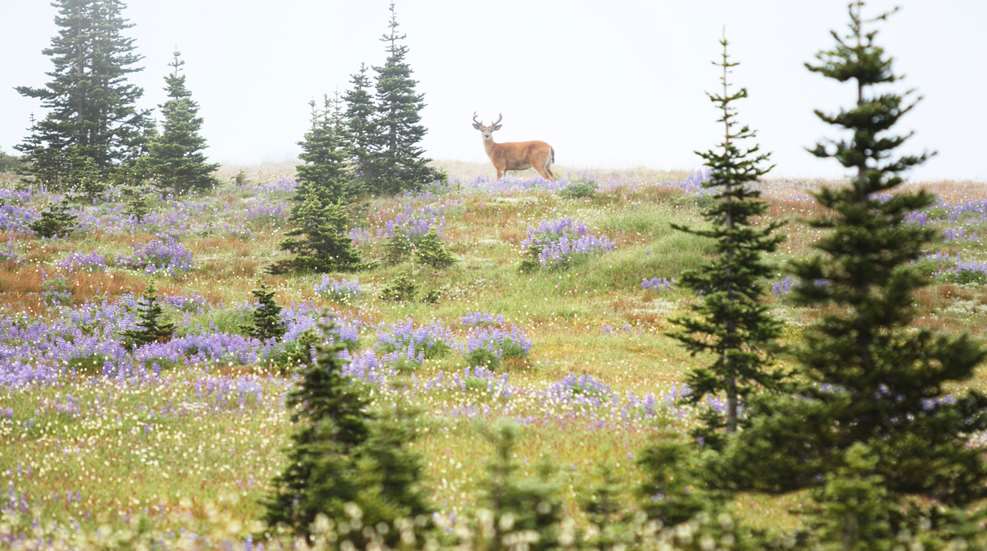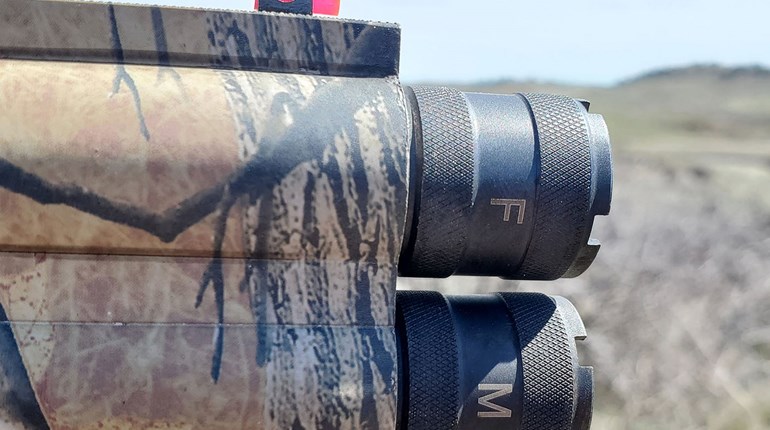
For a few years now, a big trend in competition shooting has been precision rifles for long-range shooting. PRS (Precision Rifle Series) matches are bigger and more highly attended than ever, and most rifle manufacturers are producing guns designed to reach out and touch targets at 1,000 yards, 2,000 yards and farther.
This trend has spilled over into hunting, with many gun makers promoting their precision rifles as hybrid competition/hunting guns and specifically marketing them to hunters who want to take long-range shots at game. There’s nothing wrong with this, but long-range hunting does come with a caveat: Each hunter has to know her limitations. If there was ever a situation where “just because you can doesn’t mean you should” applied, it’s taking long shots at game animals.
Buying a long-range rifle does not make you a long-range shooter, and even the best long-range shooters will attempt steel targets at much further distances than they would ever shoot game. So, how far is too far?
Sorry—I’m not going to put a number on it for you. Every one of us is different in our confidence and ability, and every situation is different. In general, the old hunter’s maxim, “If you can get closer, you should,” applies, but it’s perfectly ethical to take a hundreds-of-yards-away shot if you’ve practiced it extensively at the range, you know your equipment thoroughly, and conditions are right. Is it acceptable to take a 1,000-yard shot at an elk or a 700-yard shot at a black bear? Maybe. But if you’re going to take a long-range shot at a game animal, there are a few things you need to consider that could go wrong.
1. Your gear might not be up to the task. You don’t necessarily need a rifle that’s designated “long-range” to pull off a really long shot at game, but you do need a sub-MOA rifle that shoots very accurately. You also need a bullet that holds up at distance and a scope that allows you to use a precise aiming spot—no holding in the air above the animal’s back and hoping you guessed right. Whether you use hashmarks in your reticle to account for bullet drop or you dial your scope to the proper elevation is up to your personal preference. But no guesswork.
What you don’t want to do is go out hunting with your regular deer rifle, expecting shots of 200 yards or less, and find yourself in a situation where you’re tempted to take a poke at 500 yards because a really nice animal hung up out of your normal range. If you don’t know what your rifle/load combo does at 500 yards, don’t even think about it. There is no room for spontaneity when deciding to take long shots.
2. You could pull the shot. Be honest with yourself. If you haven’t taken this same shot at a target many times before, absolutely do not attempt it in the field—I don’t care how big that buck is. Even if you have practiced a shot at this distance many times at the range, consider if you’re really ready for it in the field. You need a rock-solid rest, preferably from the prone position, to take a long shot at game. But even still, shooting off a bench is very different than shooting off a tree limb or a backpack. Even if you’re accustomed to shooting prone with your bipod, it’ll be different when you’re on the side of the mountain and not at the flat, comfortable range you’re used to.
And don’t discount the effects of buck fever. When you’re facing an animal, there’s a lot more adrenaline coursing through your system than you’ll ever have when you’re sitting calmly on a bench at the range. Your heart rate speeds up. Your breathing changes. Your muscles tense up. If you jerk the trigger slightly on a 100-yard shot at a deer, there’s a good chance you’ll still kill that deer—but those stress-fueled mistakes magnify at distance. At 600 yards, a jerked trigger is a disaster.
3. The wind could push your bullet around. What’s the weather like? If the wind is gusting, forget about it. Anything over a slight breeze is asking for trouble, no matter how good you are at reading the wind. Remember that the wind where you are, the wind where the animal is standing and the wind in between can all be blowing at different speeds or even in different directions. The farther the shot, the more this wreaks havoc on bullet trajectories, and the stakes are too high to take a chance on a live animal.
Reading the wind is a skill that takes time (and lots of misses at the range) to develop, and even under the best conditions, it’s easier to read at the range than it ever will be in the field. The range probably has flags at varying distances that will help you see what the wind is doing. In the field, you’ll be relying on the movement of grass, brush or trees to clue you in—if you’re lucky.
If you are not absolutely confident that you understand what the wind is doing, don’t attempt a long shot.
4. Your DOPE might be inaccurate. DOPE stands for Data On Previous Engagement. You technically won’t have any since you (presumably) haven’t fired any shots at this animal yet. That means you’d better be doubly sure you know the range and the exact number to dial your scope to. You’d better be very confident about your wind call.
Range is especially important. No guessing. As an example, my ballistics app (Oh yeah, you need one of those, too) tells me that a 147-grain projectile fired from a 6.5 Creedmoor will drop 21.3 MOA from the muzzle at 800 yards. That’s about 170 inches or 14 feet. At 775 yards, drop is 20.24 MOA, which equates to about 157” or 13’. At a distance like that, if you get your range wrong by even 25 yards, your shot could be off by 12” or more. That’s enough for a clean miss or a nasty wound. If you don’t know the exact range, don’t shoot.
Drop is influenced by altitude, atmospheric conditions and more. You don’t think about that when you’re hunting the Deep Woods where shots are 50 yards and under, but at long distances, it does need to be considered. Old-school drop tables taped to your rifle’s stock are handy, but it’s much better to have a ballistics app that uses your phone’s exact location to connect with local weather data and adjust the ballistics tables accordingly.
5. The animal could screw it all up for you. Even if you do everything right and conditions are perfect, in the end, the animal itself still has a chance to mess things up for you. First of all, consider what the animal is doing before you take a long shot. Is it milling around feeding? That has the potential for trouble, because in the time it takes you to get a range and get set up to shoot, it could have grazed 25 or 50 yards closer or farther away, changing your drop dramatically. Just as likely, it could make an ever-so-slight movement as you’re triggering the shot that changes your bullet’s point of impact. Numbers vary based on different calibers and loads, but it can take a bullet a full second or more to travel a long distance to a far-off animal. How many steps could an elk take in a second? It could lift its head, turn its neck and change the angle of its body facing you, or make any number of other slight movements that will ruin your shot placement.
If the animal is moving, forget about a long shot. There are too many factors at play, and you have zero control over what the animal will do. The smaller the animal, the less room for error, too, so keep that in mind.
6. It could get complicated after the shot. If all goes well and you successfully shoot, say, an elk at 800 yards on the next ridge over, great. Now what? Now you have to get all the way over to it, which will take at least a little time. If the 800 yards represents a serious hike that will take a while, you run the risk of predators or scavengers getting to the animal before you do. I wouldn’t call this a big risk, but it’s possible.
More importantly, not only do you have to get over to the animal, but you have to pack it out. Consider the time all of this will take before you take the shot. Do you have time to get to it, field-dress it and pack it out safely before dark? If it’s late in the day and you’re considering a long shot across a steep ravine, think about how much time the distance and terrain will add to all the after-hunt chores.
Long-range hunting is a precision game, and it shouldn’t be undertaken lightly. You need total confidence in your skills and your gear, an understanding of conditions and how they impact ballistics, and a little cooperation from the animal. If you don’t have all of that, reconsider your shot. And remember: If you can get closer, you should.














































